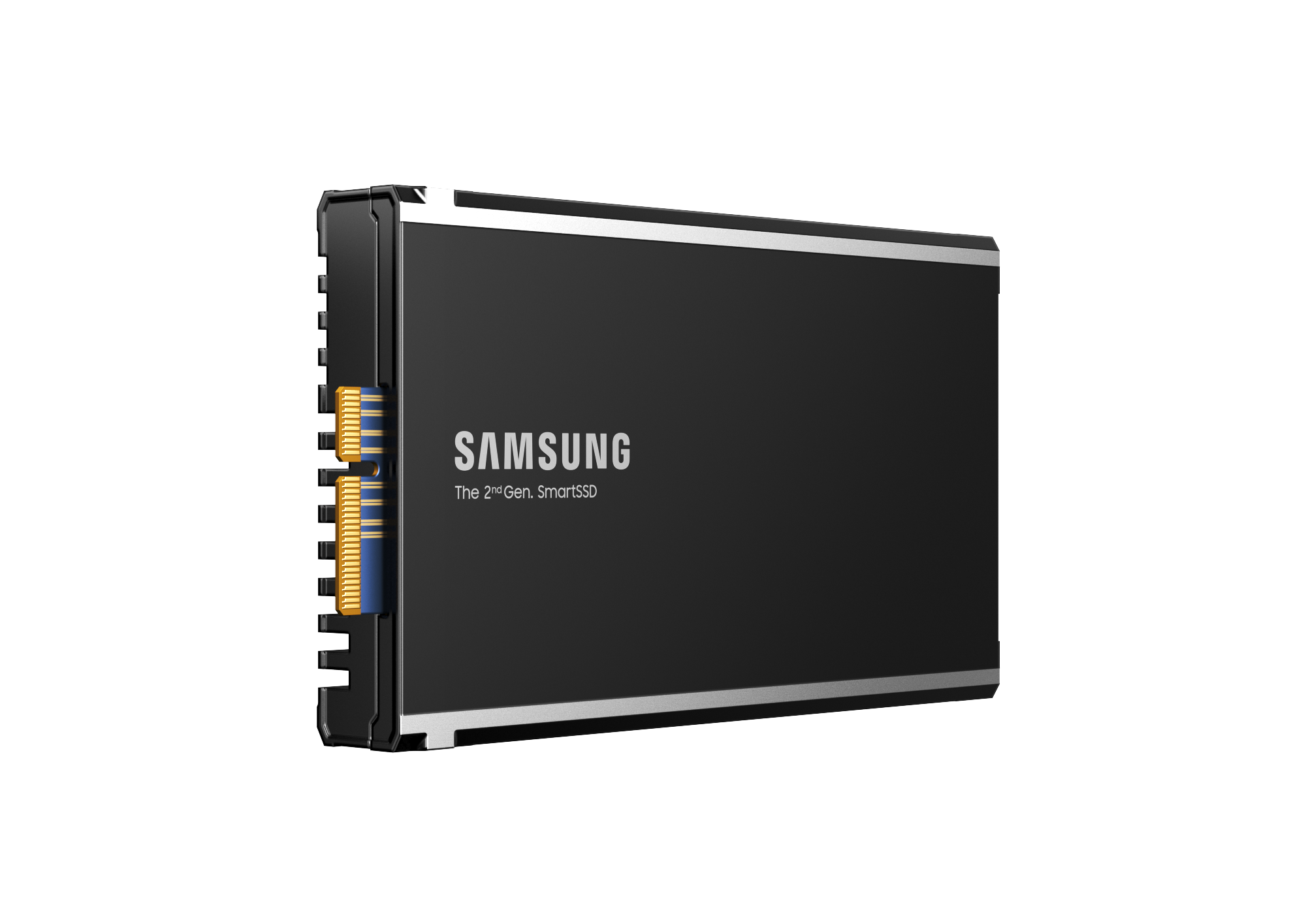Samsung Introduces AMD-Powered Second Gen Computational SSD
Reducing latency between the SSD and CPU
Samsung's revised take at a Computational Storage Device (CSD) may be just another key element in High Performance Computing (HPC) environments. Powered by an AMD Xilinx Versal FPGA, Samsung promises its new product will lead to 50% reduced computational times, a 70% lower power consumption, and a reduction in CPU utilization in the order of 97% compared to the cost of running conventional SSD devices for frequently-accessed data. The SmartSSD has just become smarter.
Enabled by the recent AMD-Xilinx marriage (which closed on February 14th just like any mainstream love story), Samsung's second-gen SmartSSD can process data itself. While this may seem like a case of finding a solution for a non-existent problem, it actually solves one of the most pressing bottlenecks in HPC: the flow of data between different elements of the compute path.

Because data is processed directly within the SSD, there's no need for it to be shuffled back and forth between storage banks. Not only does this free up bandwidth for the flow of other data, it also aids on cutting latency, as there's no additional trips between the central processing unit and the data storage device itself. It also frees up the system's CPUs towards more performance-critical tasks rather than processing the read and writing of data towards the CSD's memory banks.
It's a cost that may be negligible for the end-user in 99% of scenarios, but as the amount of processed data increases, so does its reading and writing apply a bigger load on the system. With the extreme compute density of the latest systems being what it is, diverting even a tiny bit of processing towards a component that's comparatively passive when compared to the CPU also aids in better dispersing the generated heat.
Samsung's second-gen SmartSSD features in-built Arm cores - especially well-geared towards the low-power, low-temperature environment of an SSD deployment within a supercomputer.
According to Samsung, the CSD is especially geared towards the AI/ML inferencing market, Business Intelligence analysis, big data analytics, video transcoding, financial services, genomics, search queries and transparent compression.
"Commercialization of the first-generation SmartSSD, in collaboration with AMD, established that the computational storage market has great potential,” said Jin-Hyeok Choi, Executive Vice President and Head of Memory Solution Product & Development at Samsung Electronics in a press release. “With the upgraded processing functionality of the second-generation SmartSSD, Samsung will be able to easily address increasing customer needs in the database and video transcoding sectors, as we expand the boundaries of the next-generation storage market.”
Get Tom's Hardware's best news and in-depth reviews, straight to your inbox.
At the very least, it aids in liberating the CPU cores for those extra percentage points of work. With power budgets for supercomputers being what their are, the benefits of that 97% reduction in CPU load compared to a typical SSD will allow more work to be done within the same CPU or GPU.
Mind you, this isn't the first computational SSD we've covered - that honor belongs to the NGD Systems' Chia-AutoPlot CSD, which aimed to give Chia users a way to achieve the same macro-level results as Samsung's SmartSSD, but aimed at mining the Proof of Time and Space Chia cryptocurrency.

Francisco Pires is a freelance news writer for Tom's Hardware with a soft side for quantum computing.